The content of the article
Cyclamen refers to perennial plants. The flower blooms in late autumn and winter, throwing up to 15 buds of various shades: from salmon and soft pink to rich lilac and purple. At home, it is recommended to grow European and Persian varieties, as well as their hybrids with terry and corrugated petals. To get healthy and beautiful plants, you should select high-quality seeds and carefully care for them.
Good and bad seed
When buying bags with future cyclamens in a flower shop, you should check the expiration date of the seed. In fresh specimens almost 100% germination, and overdue options turn into sprouts only in rare cases. More often they rot and die.
Purchased seeds must be sorted, separating the viable harvest from empty shells. Checking planting material is simple:
- Dissolve 20-30 g of salt or white sugar in a glass of water.
- Immerse the cyclamen seeds in liquid and stir for 5 minutes.
- Wait until one part of the seed floats to the surface and the second one settles to the bottom.
- Drain the solution with empty shells. They will be at the top.
- Rinse the seeds that have settled to the bottom with clean water and soak them so that they swell and increase in size.
In the container with future cyclamens should be added "Zircon". The tool helps the seeds to adapt to the substrate, stimulates the growth of the flower and increases its resistance to diseases. You can do without additives, just soaking the seed in warm water for 1-2 days.
The swollen seeds, without drying, are immediately planted in a wooden box filled with a special mixture. Cyclamen will need 30–40 days to slip and get stronger. During this period, it is important to protect the seeds from sudden temperature changes and not to fill with water, otherwise even the strongest and hardened planting material will begin to rot and die.
Nutrient Substrate
Cyclamens are not too fastidious and can take root in almost any soil. The main thing is that the land meets three criteria:
- did not turn into a tight lump when dried;
- let the root system breathe;
- took out excess moisture in the pan, and did not delay the inside of the pot.
Some gardeners recommend peat. Yes, the material is nourishing and contains many minerals that will accelerate the growth of cyclamen, but there is one drawback: this soil will absorb too much moisture. It is necessary to constantly monitor that the middle and lower peat layers are dry before the next watering, otherwise the root system of the plant will attack the fungus and the flower will die.
Many nutrients are contained in leafy ground. Choose varieties with unburned remnants of bark and fallen leaves. Suited and sod soil. The soil brought from the forest or vegetable garden is necessarily calcined, doused with boiling water or disinfected in a double boiler. High temperatures will destroy insect eggs and weed spores, as well as fungus and disease.
Peat or earth is mixed with coarse sand or fine perlite to make the substrate loose.Cyclamens grow better in weakly acidic or neutral soil, therefore at high pH it is advisable to add 10–20 g of dolomite flour to the substrate.
Tip: Fans of flowers recommended to abandon peat. It is better to stay on the variant of earth, sand and perlite. Do not add humus or compost to the substrate in order not to infect cyclamens with fungus or parasites.
Planting seeds
You need a shallow wide box made of wood or plastic. Seeds can not be planted in separate pots until they have germinated. A weak root system is not able to occupy all the space, so the soil begins to sour and mold. As a result, young shoots get sick and die.
Planting cyclamen seeds is simple:
- Lay the bottom of the box with expanded clay, small pebbles or grated foam. The material performs the function of drainage.
- Half filled with a substrate that is tightly tamped. Make a toothpick shallow holes or grooves for seeds.
- Lay wet planting material on the substrate. To fill up with a thin layer of sand which will provide sprouts with air and will not allow moisture to stand.
- Add 0.5–1 cm of peat or nutritious soil on top.
- Moisten with a spray bottle.
- Cover with glass or cling film. Get a kind of greenhouse.
At the first stage, cyclamens do not need light or abundant watering. Seeds should be protected from drafts and sudden changes in temperature. Sprouted shoots are airing daily by lifting the glass or opening the film. Keep the box away from open windows and crevices so that the draft does not cause the death of the cyclamen.
The cover is removed after the formation of the first full sheet. Saplings give a few days to adapt, and then transplanted into new individual containers.
Picking rules
Pots choose medium depth with a small diameter. The flower will live in them for a year, maximum two, and after that it is necessary to transplant the plant into a more spacious pot. In the bottom, one large hole is made into which a rope of gauze or a short thick rope is passed through. Cyclamens can not be watered, as usual indoor flowers. Water is detrimental to the root collar and leaf rosettes, so it should come from the bottom, not from the top.Thanks to the rope, the plant receives the required amount of fluid.
Cyclamen picking occurs in several stages:
- Pot fill any drainage material.
- Pot half filled with substrate with the addition of sand and perlite.
- Liberally pour the earth in a box in which cyclamens grow. It is easier to take out the sprouts and not damage the root system.
- Saplings with lumps of soil to transfer to the pot. Finish the substrate and firmly tamp, leaving the root neck on the surface.
- Do not water for several days, let the flowers soak up the liquid from the wad of earth, with which they were transferred to a new pot.
- A week later, fertilize seedlings with ammonium sulfate solution. The mineral supplement will accelerate the adaptation of cyclamen and protects fragile flowers from disease.
- 7 days after the first fertilizer, fix the result with potassium nitrate solution.
Important: Cyclamen picking is performed 3-4 months after the emergence of shoots. Sprouts will have time to get stronger, and transplantation will not be too much stress for them.
Pots with young flowers are placed on a special tray filled with small or medium pebbles.The drainage layer is necessary so that the substrate always remains slightly wet, but not wet.
Light day, watering and temperature conditions
Crates with seeds are kept in cool rooms where the temperature does not fall below + 16–14 and does not rise above + 18–19. In the warmth of the plant hibernates, and its development slows down. In order for the flower to grow faster and more actively, the box can be put in the basement or carried out on the balcony if there is an early spring outside the window. But the cold is also capable of ruining the shoots, so the cyclamens protect from frost and low temperatures. If the thermometer shows + 5–10, seedlings should be brought into the house. Adult flowers feel comfortable at +20 and below. The heat weakens the exotic plant, it becomes more vulnerable and can get sick.
Sprouts that do not have time to hatch, the light is not needed. But when the first purple strings appear, the capacity with flowers is rearranged to the western or eastern window, or a fitolamp is installed next to them. Direct ultraviolet hazardous to cyclamen. The sun burns and injures leaves, dries the soil. In summer, the flowers are shaded and hidden in the far corners of the house, where it is cool and muffled light.Tulle, translucent lace curtains or blinds should be hung on the windows so that they diffuse and soften the sun's rays.
Water the cyclamen with settled filtered water. You can dial from the tap or collect rain. The liquid does not have to be heated, but ice water is not the best choice. Let it be at room temperature or slightly warmer.
Water is not poured into the pot, and in the pan. Leave on for 30–50 minutes so that the plant has time to “get drunk”. Carefully drain the rest. You can not breed a swamp, which will start a fungus or mold.
In summer, the air around the cyclamen is useful to humidify with a spray bottle to protect the plant from heat. Spray liquid from the spray bottle at a distance of 30–40 cm from the top of the flower. It is impossible for droplets of moisture to fall on the stems and root collar, as well as buds and blossoming buds.
Tip: You can periodically wipe the leaves of cyclamen with a damp sponge or cotton swab to remove dust, and to prevent the appearance of spider mites.
Useful information
- The first 3-4 months after the picking, exotic flowers practically do not grow upwards, because they build up the tubers and the root system.As soon as the lower part of the plant fills the pot, the top will become thicker, and after 7–8 months buds will appear.
- Cyclamen seeds are planted in March or April, when it is cool and not too sunny.
- Fertilize exotic flowers should be 1-2 times a month, making weak solutions. When cyclamen drops leaves and goes into a hibernation stage, it is necessary to abandon the additives and reduce watering. With an excess of mineral salts in the soil, the plant weakens and fades.
- When the flower “wakes up” and the first leaves appear, it should be transplanted into a new, more spacious pot.
Even amateur gardeners who only know this subtle science can grow cyclamen from seed. It is necessary to hide an exotic plant from the sun, keep it in a cool room and periodically moisten the soil. If you follow the simple rules, just one year after planting seeds, exotic flowers will grow stronger and throw out their first buds.
Video: how to grow cyclamen from seed

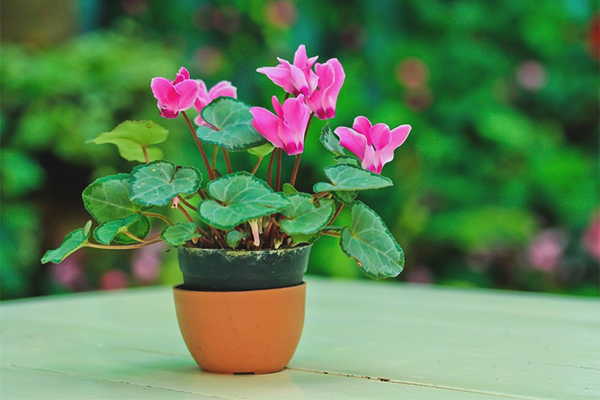
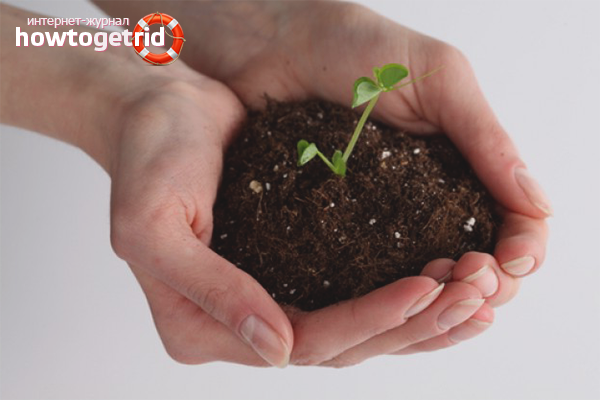
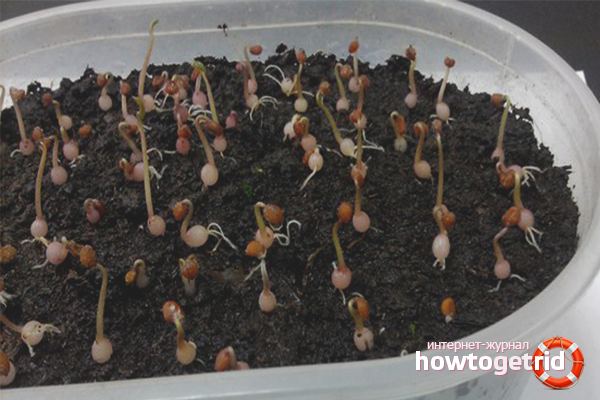
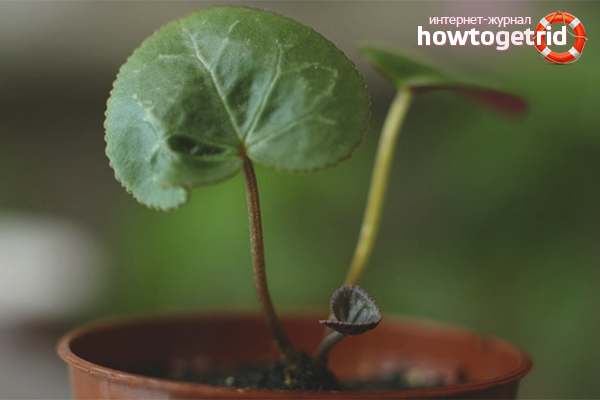
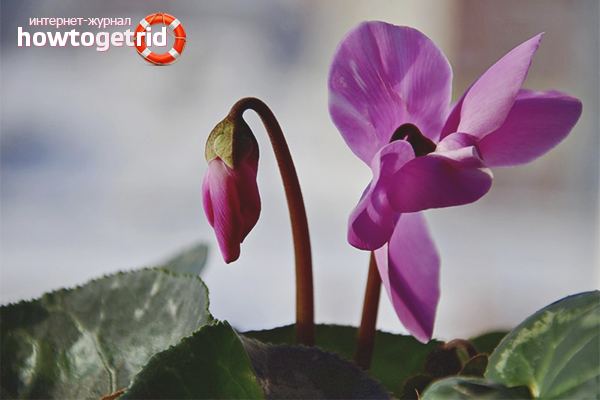

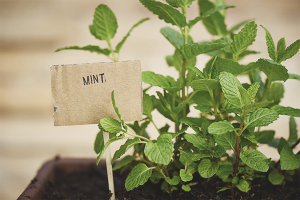
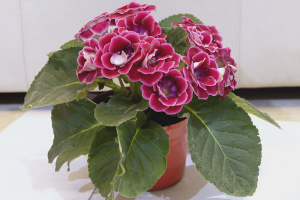
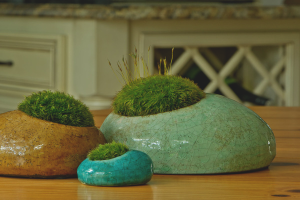
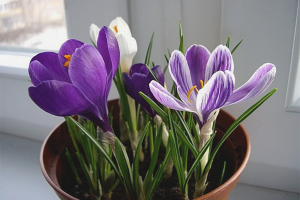
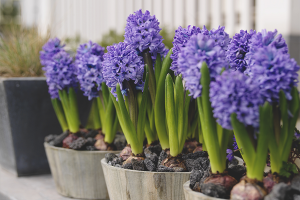
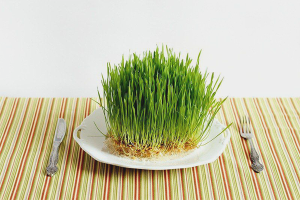
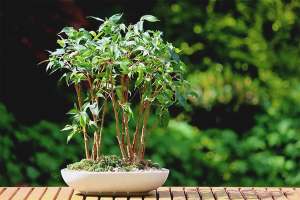
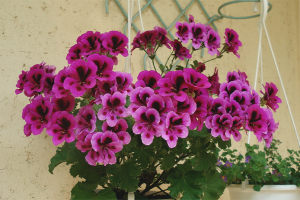
To send